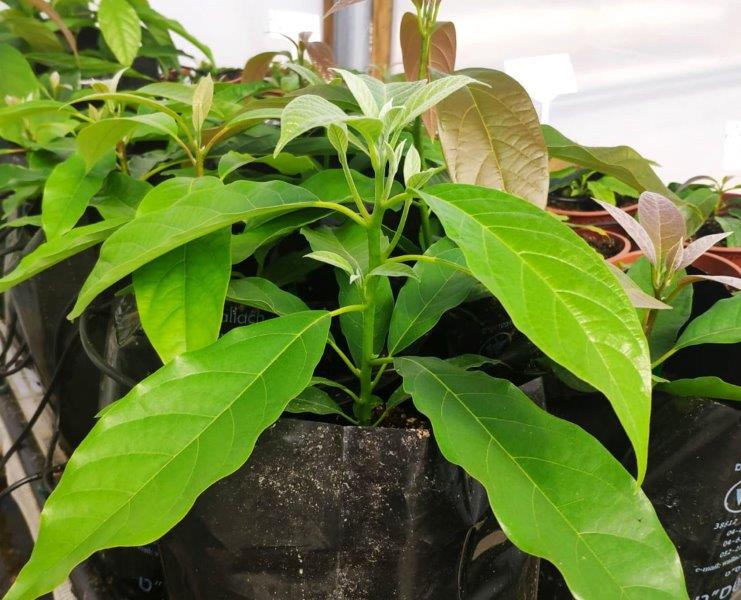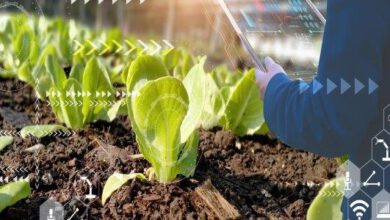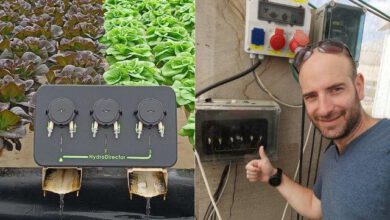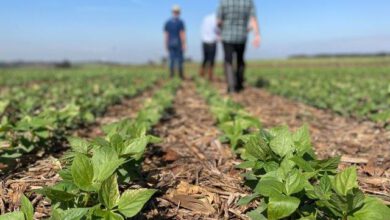Finding the temperature threshold for Young `Hass` Avocado Plant Leaves
Physiological Characterization of Young `Hass` Avocado Plant Leaves Following Exposure to High Temperatures and Low Light Intensity
Lior Rubinovich, liorr@migal.org.il, Mop Tzafon*, MIGAL* , Or Shapira, orr@agri.gov.il, Volcani


The worldwide demand for avocados has resulted in the planting of millions of young plants each year. However, global warming, resulting in high temperatures, sensed as heat stress, may severely damage these new plantings. The objective of this study was to assess the risks of heat stress on young avocado plants. We aimed to characterize different physiological parameters of young `Hass` plant leaves following exposure to high temperatures under low light (LL) intensity and to pinpoint the temperature threshold for significant heat stress damage in these plants. To this end, young potted plants were subjected to different temperature gradients in a controlled-climate chamber. Heat stress treatments significantly reduced CO2 assimilation in plants subjected to 49oC and higher temperatures. Stomatal conductance to water vapour and substomatal internal CO2 concentration were less sensitive to the heat treatments. These results imply that the heat damage threshold for young avocado plants under LL conditions is between 49°C and 51°C, whereas at 53°C, severe and irreversible leaf damage occurs.
Over the last decade, changing climate patterns have been associated with global warming. Plants may be severely damaged by very high temperatures, sensed as heat stress. Heat stress significantly affects plant developmental processes such as seed germination, vegetative growth and reproductive production. Moreover, heat stress may impair crucial physiological processes in the plant, namely photosynthesis and respiration rates, stomatal conductance and leaf water potential homeostasis. At high temperatures, net carbon assimilation may decline due to various processes such as increased photorespiration, increased mitochondrial respiration, inactivation of Rubisco and decreased activity of photosystem II. Stomatal conductance may be elevated or reduced, depending on the plant species and the heat stress conditions. Heat stress may also reduce the optimal quantum yield of photosystem II (Fv/Fm) ratio, which leads to significant reductions in photosynthesis.
Other direct effects of heat stress, such as increased fluidity of the thylakoid membranes, increased reactive oxygen species (ROS) production, inactivation of enzymes, loss of membrane integrity, inhibition of protein regulations and protein degradation may also lead to severe injuries to different plant tissues. Eventually, visible foliar damage may occur, depending on the duration and the timing of the exposure to the high temperatures.
As heat stress may severely limit the productivity of various commercially important crops, global warming has potential calamitous impacts on global food security.
In the last few years, the avocado has become a commercially important subtropical fruit crop in many countries worldwide. The avocado cv. `Hass`, a black-skinned hybrid of the Guatemalan and Mexican landraces, accounts for over 85% of global avocado commerce. As the demand for avocado fruit rises worldwide, millions of young avocado plants are being planted each year in countries with tropical and subtropical climates.
However, as global warming is resulting in more frequent extreme climatic events, these new plantings may be severely damaged by very high temperatures in the young orchards. For example, in the spring of 2020, an extreme heat wave occurred in Israel. In the Jordan Valley, one of the avocado cultivation regions in Israel, maximum daily temperatures exceeded 45°C in the shade (https://ims.data.gov.il/). Numerous studies have addressed the effects of heat stress on fruit trees, including citrus, litchi, mango, and others. Although several studies have assessed the effect of heat stress during flowering and early fruit set on mature avocado trees, very little is known of its effects on young avocado plants.
Therefore, in the light of climate change and the gradual increase in global temperatures which may limit avocado cultivation and orchard expansion, the main objective of this study was to assess the risk from heat stress on young avocado plants. Specifically, we aimed to characterize different physiological parameters of young `Hass` avocado plants following exposure to high temperatures and to pinpoint the temperature threshold for significant heat stress damage in these plants. As combination of two different abiotic stresses, such a heat stress and high light intensity, will result in more tissue damage than that obtained with each stress separately, in this study we examined the effect of heat stress with low light (LL) intensity. That way, we could isolate and focus on the effect of heat stress on the plants, rather than the combined effect of two different abiotic stresses. In this study, we characterized physiological parameters of young `Hass` avocado plants following exposure to different high-temperature treatments. The artificial heat stress was designed to simulate actual field temperature gradients.
Our hypothesis was that young avocado plants will be gradually damaged with the increase of the controlled high temperature treatments, up to a certain threshold, where they will be severely and irreversibly damaged. Indeed, the plants were gradually damaged from 49 °C, until severely and irreversibly damaged at 53 °C. Thus, our results suggest that the heat stress threshold for young `Hass` avocado plants is between 49–51 °C under LL intensity. We also assume that this threshold will be lower at field conditions, where irradiance levels are usually much higher. In order to determine this threshold, further research is needed to characterize short- and long-term effects of combined heat stress and high-light stress under controlled and field conditions.
The article was published in the scientific journal Plants
* Mop Tzafon, *MIGAL Research Institute, *A.R.O – Volcani Institute




